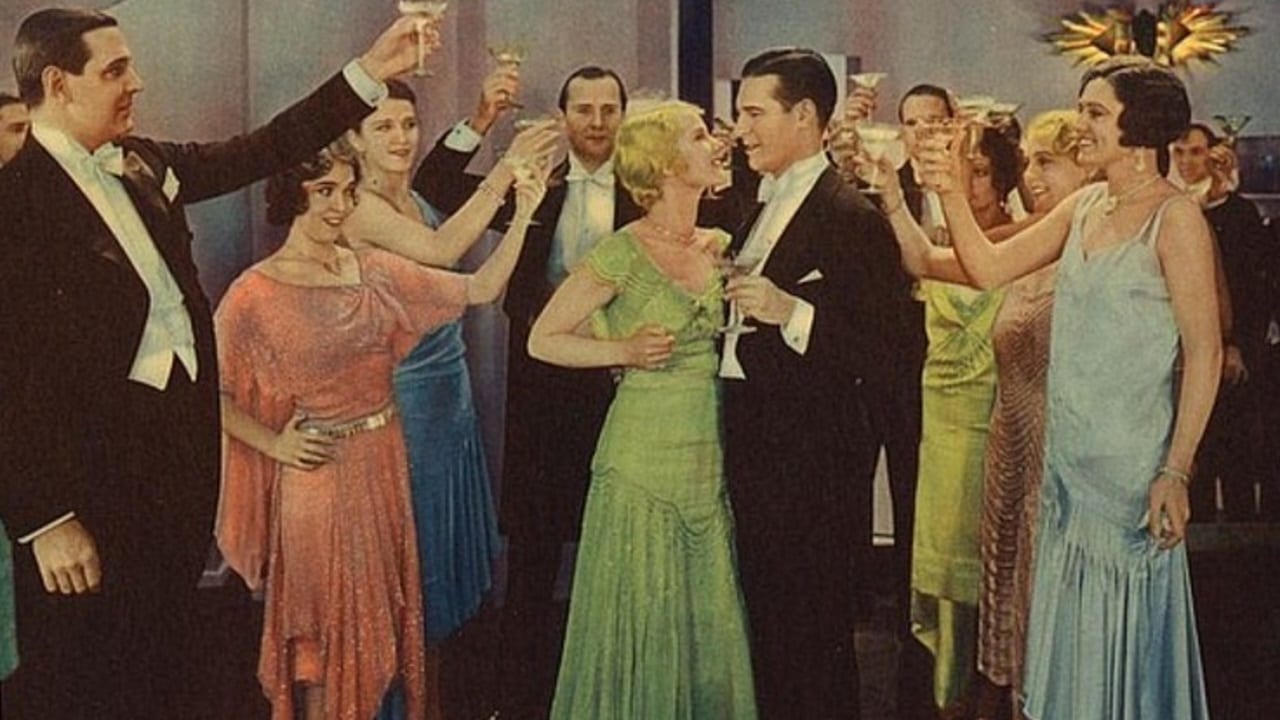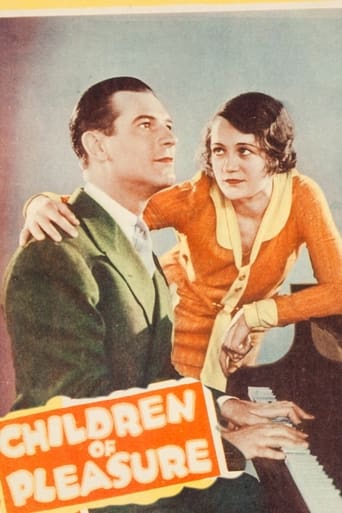



Truly Dreadful Film
The acting is good, and the firecracker script has some excellent ideas.
View MoreIf you're interested in the topic at hand, you should just watch it and judge yourself because the reviews have gone very biased by people that didn't even watch it and just hate (or love) the creator. I liked it, it was well written, narrated, and directed and it was about a topic that interests me.
View MoreGreat example of an old-fashioned, pure-at-heart escapist event movie that doesn't pretend to be anything that it's not and has boat loads of fun being its own ludicrous self.
View MorePrevious reviewers have hit the high spots in summarizing this 1930s musical from MGM. Lots of criticism has been thrown at the perceived inadequacies of the music and dance aspects of the movie. Yes, when looking at it through today's eyes, it looks dated, simplistic, and fairly unpolished. But the higher standards of the coming years hadn't arrived yet, so let's give this a break! Indeed the dance numbers could have been better rehearsed. If one looks closely, the footwork in the production numbers, while lacking Astaire/Rogers-like precision, is still pretty close. Where the real problems come are in the areas of arm, hand, head, and other body motions. It looks like those aspects of performance were never discussed with the cast, so the resulting dances look sloppy. But this was a step in the process of giving us the higher-level musical that some of us love so very much! Watch this film when you get the chance and enjoy this chapter in the development of an All-American art form!
View MoreIf you are possibly going to spend 75 minutes or so out of your life watching an early musical from MGM, there's a strong chance you already know what you're in for--this short quickie, compared to a creation from Busby Berkeley at Warner's a few years later, is primitive indeed, but captures a time and place in Hollywood like few other films are able to do.The plot is simple--winsome secretary loves a songwriter who falls for a society dame. The songwriter is zippy Lawrence Gray who smiles through his tears, and composes a song when he wants to express himself in love or out of it. One of his interpreters (and comic relief) is a Sophie Tucker type, a sort of Red Hot Mama attached to her ethnic pianist (at least that's how's he's played). We get some peeks at various musical numbers, some out-of-step minstrels in a theatre and a nutty song and dance in a nightclub--and "you ain't seen nothing" until you've seen the production number for "Dust," one of the hero's hits--with several helpings of actual dust--and later, a catchy little number "The Whole Darned Things For You."The pleasures in this film are to be found in the sense of history it represents, awkward dealings with the sound, none of it prerecorded--even an outdoor encounter with comedian Jack Benny is fascinating, and one wonders if the subway entrance was a location shot or on the MGM lot. "Jiminy Cricket" Cliff Edwards also makes a jokey cameo, and the film zips along at a good pace--but ending as if the producer decided the company had run out of resources and just called "cut" and "print." Children of Pleasure is an archivist's delight!
View More"Children of Pleasure" is a 1930 curio turning up on TCM. The film is a very minor early MGM musical you can label low budget B picture. However, any MGM B looks first class compared to Poverty Row cheapies. "Children of Pleasure" arrived during the first wave of sound musicals and isn't as stodgy and crude as other musicals of the time period. In fact, there's a slight hint of how musicals would evolve in a few years hence under Busby Berkeley.The film is pre-code but the only risqué thing is the title. Story is simple and basic. Songs are forgettable. The actors are long forgotten names never achieving any kind of notable stardom. Songwriters and choreographer don't ring a bell. Director Harry Beaumont was a prominent name in silents and directed MGM's first sound musical "The Broadway Melody" (1929) winning a Best Picture Oscar.Danny (Lawrence Gray) is a hot shot songwriter. Partner Emma (Wynne Gibson) loves Danny who only has eyes for spoiled heiress Pat (Helen Johnson). Will Danny end up with Pat or Emma? That's a pretty thin storyline serving as framework for several production numbers, Gray at the piano singing songs and Jewish schtick by comedian Benny Rubin.There are delights to be found in "Children of Pleasure." Yes, that's a not yet really famous Jack Benny in a cameo. Also Cliff "Ukulele Ike" Edwards. The music has the real deal syncopation bounce never successfully imitated in later films set in this era. Some nice chorus girl line tapping. The politically correct police will demand the film be destroyed for its black face line of tappers.The pleasure in viewing even a film this obscure lies in details. The sleek women with marcelled hair wearing great fashion. Gibson wears a dress that flows with her movement during her number. Set decoration is littered with art deco design showing on chairs and piano and distinct art deco objects.
View MoreThis is a diagetic musical. "Diagetic" refers to sounds or music that has a source on the screen; when Gene Kelly starts dancing in his music and the music comes out of nowhere, that is not diagetic. In this one, about songwriter Lawrence Gray, who loves Judith Woods and is loved by Wynne Gibson, Gray sits at a piano or we see a stage in a theater. Everything is "realer". Is it better? Well, my taste runs towards the MGM musicals of the Freed era, which were not like this.Still, this is a fine early musical, eked out with the production values that MGM put into its musicals in those days, with great if stagy choreography by Sammy Lee and big production numbers, all under the direction of the underrated Harry Beaumont. He could get great performances out of mediocre actors and Wynne Gibson is a ball of fire in this one: a revelation that makes you realize that she was reined in and misused at Warner Brother.The technical people haven't solved all the technical problems of dealing with sound. The staged musical numbers sound thin in the higher register and the camera is almost entire immobile. Still, the editing under Blanche Sewell deals nicely with the issues; the songs offered are pretty good; and the parade of cameos is interesting.
View More